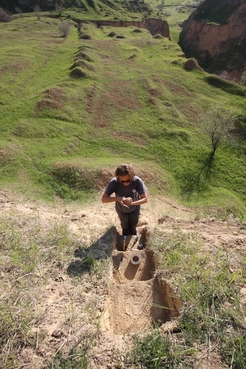Leipzig researchers have published new data on volcanic ash, known as the “Campanian Ignimbrite”, which covered wide parts of Europe
About 40,000 years ago Europe suffered a major volcanic eruption in the Phlegrean Fields west of Naples. Deposits known as "Campanian Ignimbrite" are still present in the region and bear witness to the event. The ash that was flung into the upper atmosphere from the CI eruption was distributed far across Eastern Europe. Computer models had predicted the ash layers in Eastern Europe to be between five and ten centimetres thick. New data from Urluia, Romania, however, demonstrates that CI ash deposits in the Lower Danube steppe are up to ten times thicker than previously thought. The eruption of the super volcano, which must have been substantially more explosive than previously modelled, impacted human evolution at a critical time - corresponding with the arrival into Europe of modern humans, and the demise of Neanderthals.
